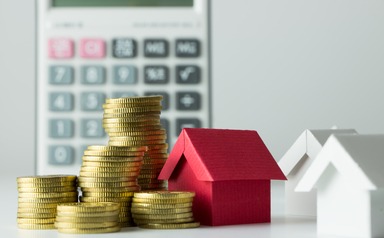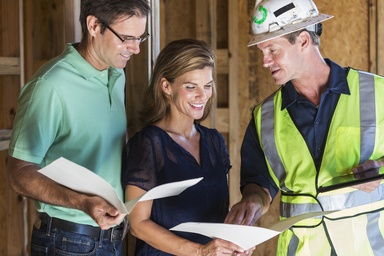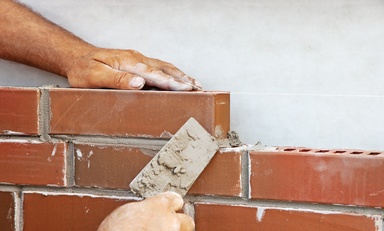 This is the first article within Section I of HSH.com's guide to home equity loans and home equity lines of credit. Home equity is explained in straight-forward terms and readers are informed about six potential ways to build it.
This is the first article within Section I of HSH.com's guide to home equity loans and home equity lines of credit. Home equity is explained in straight-forward terms and readers are informed about six potential ways to build it.
If you own your own home, and especially if you've been in it for a few years, you've probably received a number of solicitations in your mailbox urging you to borrow the equity in your home for cars, vacations, boats, debt consolidation and other purposes.
While any or all of these things are possible, there's quite a lot you should know about using your home equity, the different kinds of loans available to you, and especially how they work. This guide details home equity loans and home equity lines of credit and gives you a working understanding of them; we'll also give you essential questions to ask when you start shopping for yours.
What is Home Equity?
Home Equity, or more correctly, the equity in your home, is the difference between your home's current value, minus what you still owe on your mortgage(s). For example, if your home has a market value today of $100,000 and your existing mortgage balance is $80,000; you have $20,000 of equity in your home. Two factors create equity:
- Appreciation, caused by inflation or improvements to the house or property;
- The continuing process of paying off the principal you owe on your first mortgage
There are also other ways that equity is built or enhanced, and those are described below.
You might be surprised to know that home equity lines of credit are a fairly recent phenomenon, coming into their own only about 35 years ago as they were spawned by the 1986 Tax Reform Act. Home equity loans, on the other hand, are often the traditional second mortgage with a new name. Importantly, these home-secured loans then became the only tax-deductible form of consumer credit.
Home equity loans -- traditional second mortgages - remain more popular than you might expect, especially among borrowers who use their equity to consolidate debt or who have one-time credit needs, such as the purchase of a car or the cost of a wedding. However, changes to disclosures and other requirements of the Dodd-Frank Act have made them considerably less popular among lenders, but creative market participants have still found ways to make home equity credit available in a lump-sum with a fixed repayment schedule. We discuss these in Section II, "Home equity loan terms."
Building home equity
Many new homeowners are curious about how to build home equity; there are five common ways to establish it and these levers may be combined for maximum impact.
1. Down payment
Building home equity starts at the very beginning, when you purchase your home. Your down payment is your initial equity stake, but in today's market that could be as low as a zero percent stake (if you got a VA- or USDA-backed loan) and for some homeowners it would start at just 3 percent, in the event of a "Home Possible" or "HomeReady" mortgage. Most homeowners start with at least a 5 percent equity stake.
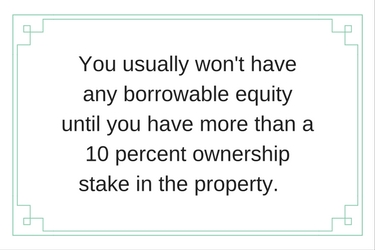 As a small equity stake could easily be erased by a small downturn in property prices, lenders generally won't allow you to access this money; for the most part, you usually won't have any borrowable equity until you have more than a 10 percent ownership stake in the property.
As a small equity stake could easily be erased by a small downturn in property prices, lenders generally won't allow you to access this money; for the most part, you usually won't have any borrowable equity until you have more than a 10 percent ownership stake in the property.
2. Amortization
Time is the homeowner's friend when it comes to building equity. With each passing month and every monthly payment made on your loan, you retire a little bit of the loan's principal -- that is, you actually own a little bit more of your home. That's your equity stake, growing month after month.
Amortizing your loan is the only sure, reliable way to build equity but it is also one of the slowest. As an example, consider the purchase of a $111,111 home using a 10 percent down payment. This leaves a $100,000 loan balance, which we'll finance with a 30-year fixed-rate mortgage at 4 percent. You start with a 10 percent equity stake, your down payment.
After one year of making principal and interest payments totaling about $5,729 (plus any taxes, insurance and PMI costs), your remaining loan balance has shrunk by just about $1,662 to $98,238 -- and at the end of your first your, your original 10 percent equity stake has expanded to about 11.79 percent - that is, you've actually retired 1.79 percent of the amount you borrowed.
The good news is that the percentage of each monthly payment that goes toward principal expands incrementally as you go, so you build equity more quickly the longer you stay in the loan. In the example above, the principal portion of your payment starts at $144.08 in payment number 1, but has risen to $149.45 by payment number 12. Not much, to be sure, but accelerating nonetheless.
This continues as months pass. After a 1.79 percent improvement in your equity stake at the end of the first year, you'll see it expand by another 1.90 percent by the end of the second, then 2.03 percent, then 2.13, then by 2.28 percent at the end of the fifth year. By that point, your loan balance should have fallen to $90,446 -- and your equity stake will have risen from the 10 percent at its outset to 18.6 percent at the end of that fifth year.
The interest rate on your loan affects how quickly equity is built. In the example above, your loan was paid down by about 1.79 percent in the first year. The same loan amount with a 6 percent interest rate sees a pay down after one year of only about 1.45 percent, so a lower rate not only carries a lower monthly payment but it also can help you to build equity more quickly, too.
Your length of your mortgage also matters when it comes to building equity. A shorter-term mortgage allows your loan's principal to be reduced more quickly, building your equity stake faster. If owning your home free and clear sooner (or just building a sizable, borrowable equity) is a priority, you might consider a 25, 20 or even 15-year loan term for your first mortgage.
How much does term-length matter? As noted, the interest rate on your loan plays a role in how quickly you build equity. A 15-year fixed-rate mortgage with a 3.25 percent interest rate and a $100,000 loan amount as above enables you to retire about 5.26 percent of your outstanding balance by the end of the first year, almost triple the rate of a comparable 30-year term. By the end of year two, you're nearly at the same point of equity building as you would be at the end of year five with the 30-year term.
Of course, a shorter-term loan means higher monthly payments, so qualifying can become an issue. Because of this, shorter-term loans usually aren't used by folks buying homes, but they are popular when refinance opportunities come along, when balances are smaller and incomes are often higher.
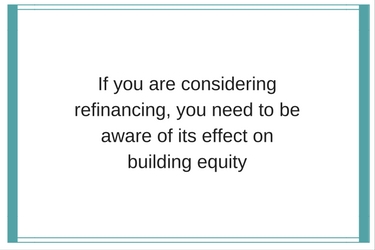 If you are considering refinancing, you need to be aware of its effect on building equity. Equity building accelerates as you remain in your mortgage -- and a refinance to a new mortgage can mean restarting the process all over again. You may get some cash-flow improvement to help your monthly budget, but it may come at the expense of equity building.
If you are considering refinancing, you need to be aware of its effect on building equity. Equity building accelerates as you remain in your mortgage -- and a refinance to a new mortgage can mean restarting the process all over again. You may get some cash-flow improvement to help your monthly budget, but it may come at the expense of equity building.
3. Appreciation
Where paying down your loan via amortization is the surefire way to build equity, there is also a wildcard factor that can help (or hurt) your equity stake: property price appreciation (or depreciation).
Property price appreciation can accelerate or expand your equity stake rapidly, but is generally beyond your control or direct influence. At times, as has been the case in the last few years, property values may rise by sizable amounts. According to S&P CoreLogic Case-Shiller national price indexes, there were double digit increases in home values in 2014, and increases in the 5 to 6 percent per year range through mid-2018. After a slowing in 2019, huge increases of over 11% and over 19% were seen in 2019 and 2020.
If you bought your $111,111 home as above in 2013, by 2014 the value would have risen to approximately $122,222 by the end of 2014, then up about another 5 percent in 2015, 2016 and 2017; by the end of 2017, your home's value would be about $141,000 -- - and you picked up about $30,000 in equity by doing nothing at all except owning your home -- and those increases would have continued and even accelerated in subsequent years.
Such a blast of market-generated "free" equity may be tempting to borrow; in fact, this was very much the case during the home-price boom from 2000-2007. Home values were rising quickly, and reliably; home equity grew quickly, and accessing it became increasingly quick and easy. Massive equity borrowing saw total homeowner loan balances rising too, with over $1 trillion borrowed on home equity lines of credit between 2004 and 2007 alone. Rising home values, falling first mortgage balances and offers that allowed homeowners to borrow up to 100 percent of the value of their homes put many in a vulnerable, high-leverage position.
You can track what's happening with home price appreciation in over 400 metro areas with HSH's Home Value Tracker.
Caution: Depreciation
As many came to learn, real estate markets can be fickle, and they showed this nature in the 2007-2011 years, where values dropped in stunning fashion, contracting by as much as a 13 percent annual rate in 2009 and lesser amounts in the two years before and after that. Cumulative national declines from peak to trough were about 25 percent, with certain areas seeing declines much greater than this. Seemingly without warning, many homeowners found themselves with not only no equity, but many had combined first and second liens that exceeded the current value of their home, a situation known as being "underwater" or "upside down" on your mortgage, with equity built by amortization or appreciation erased by the market.
As we'll discuss later, things have changed, and it's considerably more difficult (if not impossible at present) to get into such a highly-levered position. That's not a bad thing for the housing market and the economy as a whole, but it does have an effect on your ability to borrow your money.
You don't need skyrocketing prices to expand your equity stake measurably… even just 2 percent annual rises allow your equity to expand by almost $10,000 after just 5 years.
4. Home Improvement
Another way to expand your equity is to enhance your home's value. Making improvements that modernize the property, add space or add comfort can raise your equity stake. However, most improvements don't return the full value of what you spend on them, but the most valuable ones such as a new kitchen or fully-renovated bathroom may return 60 to 80 percent. For the most part, renovations should be done with an eye toward making the home more valuable and functional for you and your family while you live there, and just as a bonus that this work can help to raise the value of your home when it comes times to sell or borrow against it. In fact using the equity in your home to improve it -- and subsequently enhance its value -- is one of the most popular uses of home equity. We'll discuss this further in the "using your home equity" section of this guide.
5. Prepayment
The one sure, reliable way to build home equity is to make regular monthly payments. You can enhance the process of equity building by adding additional payments of principal to your regular monthly payment, "accelerating" the amortization of your loan.
While a detailed discussion of mortgage prepayment is beyond the scope of this guide, there are many ways to prepay your mortgage, ranging from having your mortgage lender switch you to a bi-weekly payment plan (effectively making a 13th monthly payment each year) to regular prepayments of a fixed dollar amount to occasional lump sum prepayments. All tend to help build your equity more quickly.
Before you think "I'd do one of these if I had the extra money," please know that even small, relatively painless prepayments can help build equity more quickly. In the original example above, with a $100,000 30-year FRM at 4 percent, rounding the required monthly payment of $477.41 to a full $500 per month (a $22.59 monthly prepayment) would see you retire just over 2 percent of the outstanding loan amount in the first year, up from the original 1.79 percent we calculated. Continue this along for 5 years and your equity stake would grow from its original 10 percent to over 20 percent -- a cumulative improvement of about 1.5 percent more equity than if you hadn't prepaid. In this example, this would be a large enough equity position to allow you to cancel any Private Mortgage Insurance even if property prices remained level from the day you bought your home. This could free up money for additional prepayments if you like -- about an additional $50 per month for a borrower with solid credit. To see this effect on your mortgage, try our RoundUpsm Mortgage Prepayment Calculator.
Now that you have a basic understanding of what home equity is and how to build it, continue to the next article in this home equity loan and line of credit guide to review ways that your home equity can be put to good use.
Next article: Using home equity


